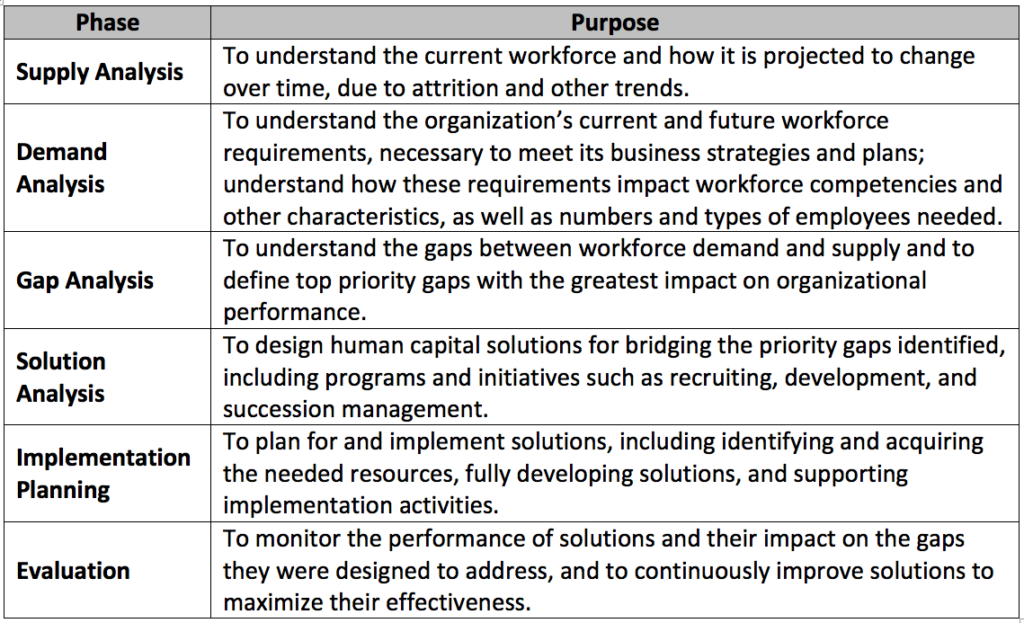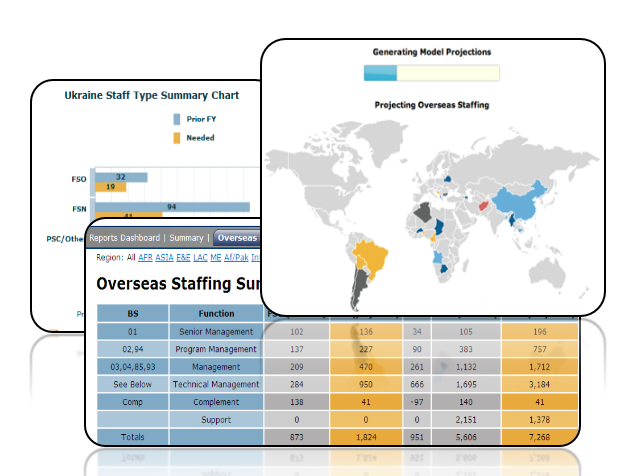A Quick Intro to Workforce Planning
October 9, 2019 in Workforce Planning
By Jessica Milloy, Ashley Agerter Raitor, Paul Bresnan
Workforce planning is a systematic process to align an organization’s future workforce to strategic priorities by anticipating and identifying work requirements, to include both the numbers and types of employees and skills the future work will require. Organizations typically plan workforce needs 3-5 years in the future and develop action plans to mitigate identified gaps. By conducting workforce planning, an organization can more thoughtfully ensure that it has the workforce deployed appropriately in terms of headcount, experience, skills, and more.
As with many organizational processes, the best place to start is with a comprehensive understanding of the organization’s strategic priorities. A previous FMP blog has discussed the strategic planning process in greater detail, and, with a strategic plan, workforce planners can better anticipate future workforce needs.
One model of workforce planning involves six phases of activity (outlined above), each with its own distinct tasks, tools, and deliverables. The chart below includes a brief summary of each of these phases. Within each of these phases, the specific methods, processes, and data analysis techniques can vary, based on the needs of the organization.

As workforce planners move through these phases, conducting these analyses and developing recommendations and action planning, the ultimate goal is to develop a data-driven workforce planning process that will:
- Align workforce requirements to the organization’s strategic goals
- Develop a comprehensive picture of where gaps exist and identify and implement gap reduction strategies
- Make strategic decisions about organizational structure and staff deployment
- Justify staffing requests to key stakeholders and inform future budget requests
FMP’s cadre of skilled workforce planners have decades of experience applying these best practices to help organizations plan for the future, making sure they get the right people in the right places at the right time to do their jobs effectively and contribute to mission success. Check out this success story from our partnership with the United States Agency for International Development (USAID).

The Problem? USAID needed to leverage all of their limited staffing resources to the fullest extent possible to meet agency-wide strategic goals and priorities and achieve their critically important development mission. They just needed help figuring out what factors drove their workload, how large and what type of a workforce they needed and turning that into a usable model to help them predict and prepare.
The Solution? FMP partnered with USAID’s Human Capital and Talent Management (HCTM) organization to design and implement the Consolidated Workforce Planning Model (CWPM)—a sophisticated web-enabled workforce planning tool that allows USAID to forecast staffing needs and align resource allocation and recruitment decisions with mission-critical priorities. FMP took a hands-on approach, traveling to various USAID sites around the world to conduct interviews and focus groups to understand the workload and staffing requirements of a large, diverse, and geographically dispersed workforce.
The Result? The CWPM has been used successfully for everything from helping leaders assess their unit-specific workforce planning needs, to preparing for reorganizations, realignment efforts, and comprehensive workload assessments, and even Congressional budget reports.
Ultimately, workforce planning is exciting because it helps organizations take charge of their destiny. Rather than endure the consequences of complex change in a complex environment, organizations can systematically enact change to get ahead of the impact of those environmental shifts. Over the course of this month’s blogs, we’ll go into more detail on some of the specific best practices, case studies, and key elements of workforce planning.
